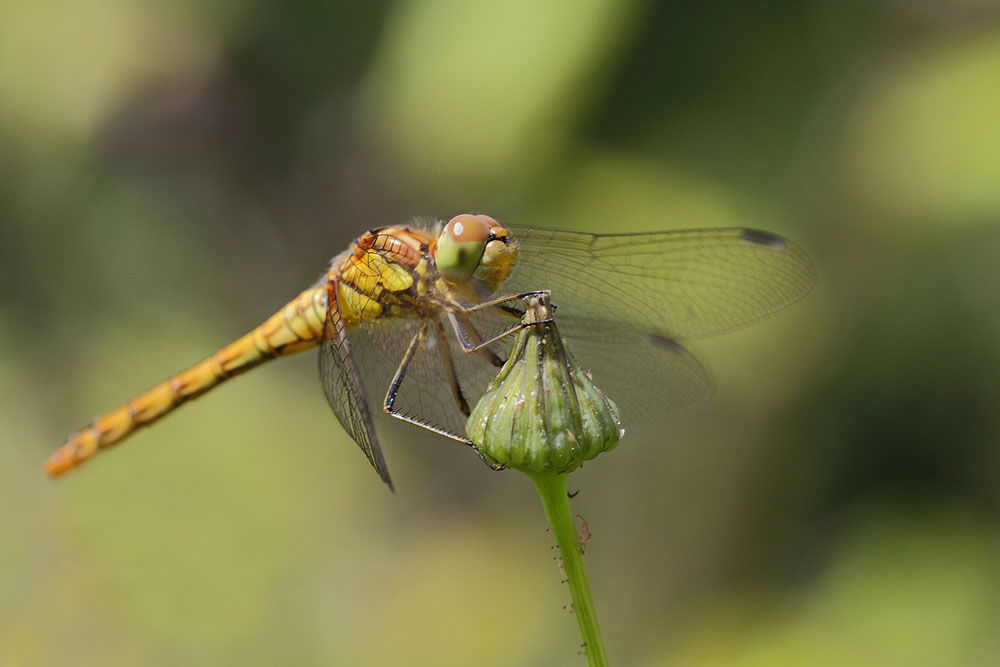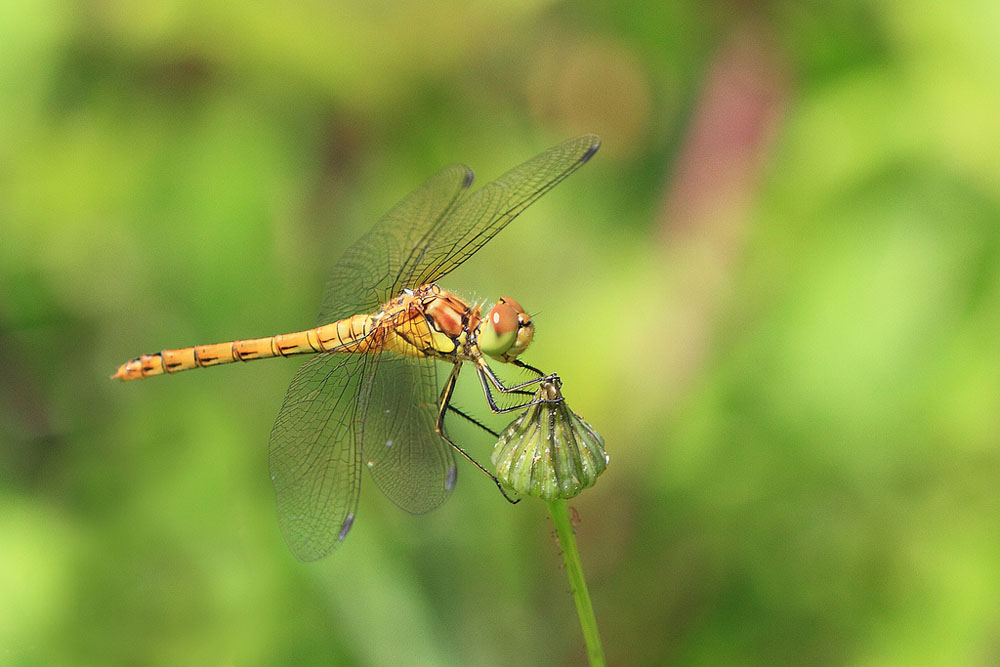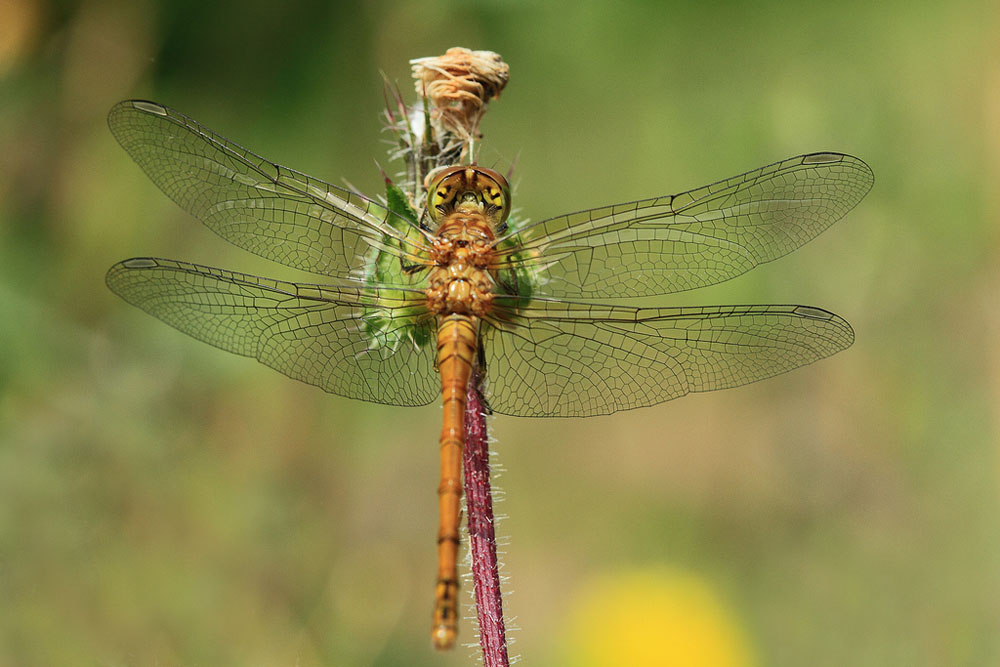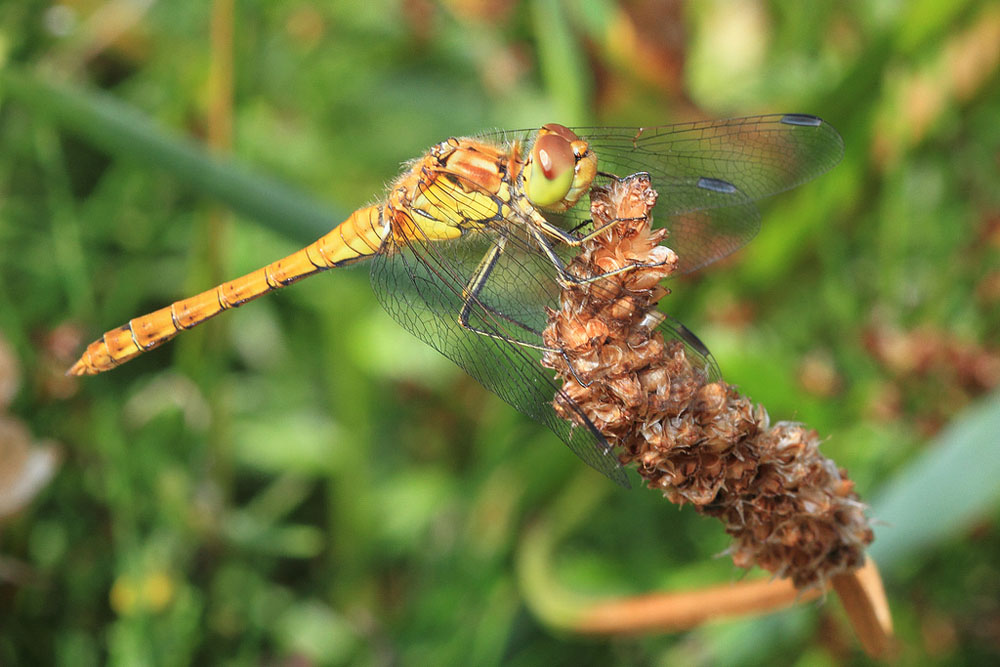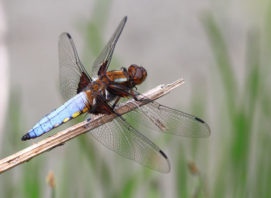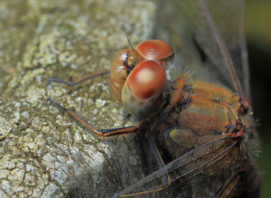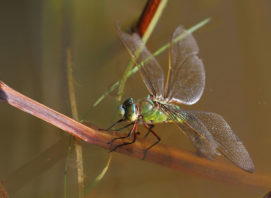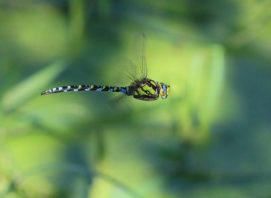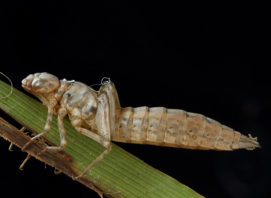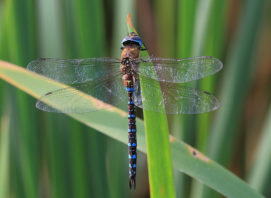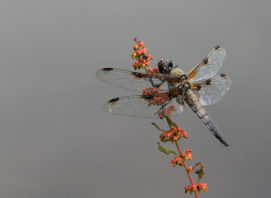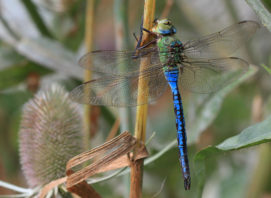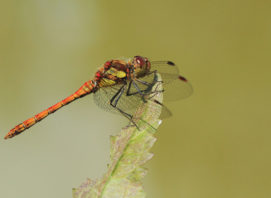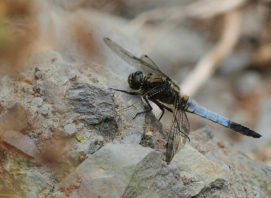Common Darter (Female)
This restless little species is the most widespread dragonfly in the lowlands. It flies late in the year, even into December.
Adult Identification: In both sexes, the thin black line across the top of the fons does not extend down the sides. The eyes and top of the thorax are brown, the later sometimes with poorly defined pale shoulder stripes. Like all Sympetrum darters, the abdomen has black line down the middle of S8-9. The legs are brown, usually with a yellowish stripe. The wings are clear with tiny areas of yellow at the base. The wing-spots vary from yellow to reddish-brown. Male: Side of thorax has two large yellow patches divided by a reddish-brown panel. The abdomen orange-red and slightly waisted. Female: The abdomen is ochre, becoming very dull, and sometimes reddish with age. Immature: Paler than female, with yellowish-brown eyes and thorax. Variations: Darker in north-west Scotland, and occaisionally in other areas, with more extensive black down the side of the eyes and abdomen and on the legs. The darker panel on the side of the thorax has three small, irregular reddish or yellowish spots. Females may also have a black ‘T’-shape on top of the thorax.
Behaviour: Basks on sheltered bare ground, allowing it to be active in cool autumn conditions. Territorial males perch on or near the ground and, in autumn, may hover several metres above breeding waters. Mating takes place at rest and lasts 10-15 minutes. Eggs are laid in flight, usually ‘in tandem’ or with the male hovering nearby, by repeatedly dipping the tip of the abdomen into the shallow water. Immigration occurs regularly with warm southerly or easterly airflows and, usually, may involve pairs ‘in-tandem’.
Observational Tips: Darts from perches to see off intruders or catch prey, usually returning to the same spot. Familiarise yourself with this species in case you encounter one of the rarer, migrant darters.
Extract from, Britain’s Dragonflies, Dave Smallshire & Andy Swash, WildGuides

